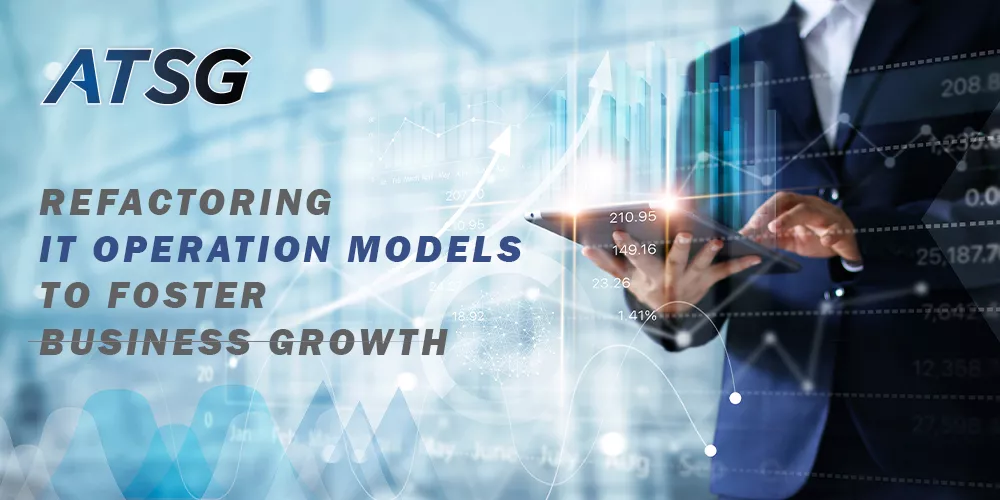In recent years, organizations have evolved business operations towards employee and customer value. Numerous IT groups have begun approaching businesses with innovative IT services that offer strong value propositions.
Business and technology executives have started working together to reimagine how technology can deliver value and a unique competitive advantage. Organizations focus on establishing strong IT operating models, to reorganize customer and employee experience and improve overall business agility. Transforming IT Operation Models has proven to show extensive business growth and success.

Designing an Effective IT Operating Model
Most organizations focus on designing operation models based on solutions and services, which tend to ignore the primary components; the Customers and Employees. Technology experts need to focus on establishing IT operating models that cater to customer-centric outcomes, and seamless access to functional operation tools for employees.
There are three key elements in transforming IT operations; formal operating model designs, IT governing, and cultural diversity. Let us explain each one of these aspects, for better understanding and clarity.
The Blueprint for an Effective IT Operating Model
There are several components that need to be integrated when designing an IT operation Model framework. The following list addresses the key ingredients that enterprises must add to their IT operations.

The Fundamental Principles:-
IT experts need to lay down a strong foundation of agreed-upon principles that would futuristically elevate the performance of operations. These principles will be fundamental in the decision-making process of the operating model.
Customer Value at the Core:-
The operation model needs to be fully aligned with the needs and demands of the organization’s clientele. Experts should categorize and segment the different products and services according to customer demands.
Creation and Delivery:-
Technology executives need to study and analyze the desired value proposition that the process and operations want to generate. This will help the enterprise achieve beneficial stakeholder experiences.
Operational Governance:-
Enterprises need to adopt governance regimes that can autonomously supervise operations and processes to ensure robust policy controls. This approach enables organizations to continue operations, without contravening any regulations and maintaining effective value outcomes.
The Human Experience:-
The essential addition to an operations model is the human-centric approach it adopts. Developing an employee and a leadership-focused environment helps increase engagement and performance.
Improving IT Governance Policy-Making
Over several years of designing effective IT operation models, organizations have realized that the missing ingredient to their success is governance. To achieve a successful IT operation and delivery, organizations need to adopt an empowering governance framework.
- The framework needs to consist of clear and rational decision-making processes.
- Governance policies need to position accountability according to expertise, instead of hierarchy.
- The framework needs to integrate corporate behaviors and decision-making that guide employee performance.
- Lastly, a transparent decision-making process can help the organization implement these policies seamlessly, across the company.
Developing a Value Oriented Organizational Culture
In the prevalent disruptive economic environment, organizations need to adopt certain values, integrated through the corporate culture that construct long-term benefits. IT experts acknowledge that future-oriented organizations adopt empowerment, shared values, employee innovation, and collaboration across their cultures. To excel in IT operations, without major disruptions, enterprises need to change their cultural processes.
- Integrate diversity and values that are agreed upon by almost every individual within the organization
- Develop a behavioral guide that aligns with the company goals, which can be exercised within the corporate culture.
- Repeat and innovate new methods, to better adapt to the changing cultural landscape.
ATSG’s Capabilities in Operational Development
Outsourcing IT operating models and solutions has become a highly-reliable resource for organizations today. Leading Managed Services and Technology Solutions Providers, like ATSG, offer viable insights, solutions, and key indicators that can assist an enterprise in successful IT operations. ATSG offers tech solutions that can facilitate enterprises with the correct tools and applications to streamline organizational processes.
ATSG caters to bringing flexibility and innovation to legacy IT operation methods, offering unmatched protection from IT-related disruptions. ATSG’s network management and cybersecurity posture management solutions and highly effective models to achieve strong operational immunity. Such technology solutions can help enterprises sustain changes, and achieve outstanding results from their IT operational procedures.
Conclusively, operational models, IT-related or otherwise, can be a major “vehicle” to boost organizational growth. Keeping up with market trends and competition can be challenging. Therefore, adopting operating models allows organizations to make changes, take well-informed decisions, and enable the workforce to perform well. Furthermore, partnering IT-related operation solutions can help organizations save time and money, by handing such tasks to professionals and subject matter experts like ATSG.




